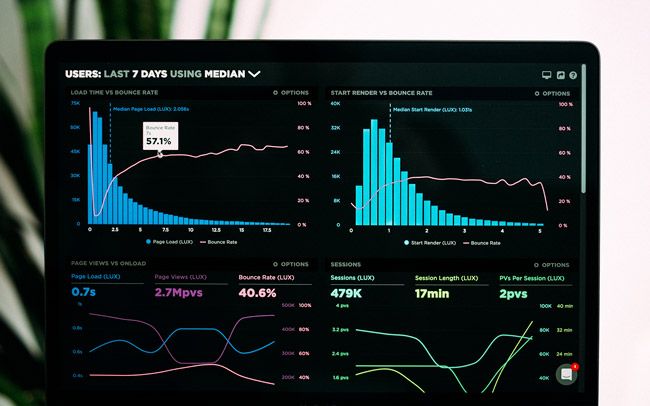12 Business Metrics That Every Company Should Know
Explore how performance metrics drive business success. From financial health to customer satisfaction, discover key insights with our expert guide. Optimize your strategies with data-backed decisions.
Nancy J. Hassler
How do we measure success? This question forms the genesis of our exploration into business metrics — the compass that guides organizations through the dynamic landscape of challenges and opportunities.
Measuring your company's performance is a critical aspect of effective management. It involves utilizing performance metrics, and tangible data points that assess various aspects of your business, such as activities, employee behavior, and productivity. These metrics serve as a means to track and measure the accomplishment of overarching business objectives.
The instinctive approach, relying on gut feelings, is not recommended. Running a successful business demands a thorough analysis of work processes, sales strategies, and financial outcomes, which is impossible without meticulously tracking relevant business metrics.
Let’s have a glimpse into the diverse metrics that businesses must consider.

What are performance metrics?
Business performance metrics, often called key performance indicators (KPIs), are measurable values that offer insights into various aspects of a company's operations. These metrics serve as a comprehensive language, translating complex business dynamics into tangible, quantifiable data. From financial indicators to operational efficiency and customer satisfaction, these metrics provide a holistic view of a company's performance.
Key Characteristics:
- Quantifiability
- Relevance
- Actionable Insights
- Adaptability
Why Are Business Performance Metrics Important?
- Metrics empower decision-makers with the data needed to make strategic, informed choices, minimizing reliance on intuition or guesswork.
- Metrics help align day-to-day activities with broader business objectives, ensuring everyone within the organization contributes to overarching goals.
- Regular monitoring of metrics enables organizations to identify areas for improvement, fostering a culture of continuous refinement and optimization.
- Metrics aid in allocating resources efficiently by highlighting areas of high performance and those that require attention or realignment.
Sales Revenue
Sales revenue is the total amount of money earned by a company through its primary operations, reflecting the success of its sales strategies and customer engagement.
Revenue metrics are a direct reflection of a company's financial well-being, providing a clear picture of its ability to generate income and sustain operations. It is a key indicator of a company's market relevance and competitiveness, showcasing its effectiveness in meeting customer needs and demands.
Calculation: It is calculated by multiplying the units sold by the selling price per unit.

Customer Lifetime Value (CLV)
CLV illuminates the overall impact and profitability of maintaining a customer relationship over an extended period. This is the predicted net profit a company expects to earn throughout the entire relationship with a customer.
CLV shifts the focus from immediate transactions to the cumulative value a customer brings over time, emphasizing the importance of building lasting customer relationships. By understanding CLV, businesses can allocate resources more effectively, tailoring marketing, customer service, and retention efforts to maximize long-term value.
Calculation: It involves estimating the revenue a customer is expected to generate over their entire engagement with the business, considering factors like repeat purchases, loyalty, and the duration of the customer relationship.
Gross Margin
Gross Margin reflects the portion of revenue available to cover operating expenses and contribute to net profit. It is calculated by subtracting the cost of goods sold (COGS) from total revenue and expressing the result as a percentage of revenue.
A higher Gross Margin suggests efficient cost management and a strong pricing strategy, while a lower margin may indicate challenges in production or pricing. Investors often use Gross Margin as an essential metric for assessing a company's financial viability and management's ability to generate profit.
Calculation: The formula for Gross Margin is [(Total Revenue - COGS) / Total Revenue] x 100.
Engagement
Engagement measures how individuals interact, connect, or participate with a brand, product, or service. This metric extends beyond mere transactions, delving into the depth of customer involvement, employee dedication, or even audience participation in marketing initiatives.
Engagement can manifest in various forms, including customer interactions with a brand, employee engagement within a company, or audience participation in marketing campaigns. In marketing, engagement metrics showcase the resonance of campaigns, indicating how well they capture the audience's attention and encourage interaction.
High customer engagement is indicative of a positive and interactive customer experience, fostering loyalty and advocacy.

Customer Acquisition Cost (CAC)
CAC is the total expenditure associated with acquiring a new customer, encompassing marketing expenses, advertising costs, and any other resources dedicated to the acquisition process. These metrics in business quantifies the total cost incurred by a company to acquire a single customer.
CAC offers insights into the financial efficiency of customer acquisition strategies, helping businesses optimize marketing spend. By comparing CAC to Customer Lifetime Value (CLV), businesses can assess the return on investment for acquiring new customers, guiding strategic decisions.
Understanding CAC allows businesses to scale their operations by allocating resources effectively and identifying channels with the highest acquisition efficiency.
Calculation: The formula for CAC is [(Total Marketing and Sales Expenses) / Number of New Customers Acquired].
Customer loyalty and retention
Customer loyalty measures the dedication and preference a customer has for a brand, while retention estimates the ability to keep customers over an extended period.
This loyalty metric reflects the customer's inclination to consistently choose a particular brand over competitors, often influenced by positive experiences, trust, and satisfaction. Retention measures the ability of a business to keep customers over time, calculated by dividing the number of customers at the end of a period by the total number at the start and multiplying by 100.
Loyal customers contribute to a stable revenue stream as they tend to make repeat purchases, reducing the need for continuous customer acquisition efforts.
Acquiring new customers is often more expensive than retaining existing ones, making customer loyalty and retention crucial for cost-effective business operations.
Conversion rate
Conversion Rate is the percentage of visitors or prospects who take a desired action, such as making a purchase, filling out a form, or subscribing to a service. This metric is a fundamental measure of success for various business activities, from marketing campaigns and website interactions to sales processes.
A high conversion rate indicates that marketing efforts are resonating with the target audience, compelling them to take the desired actions. For online businesses, conversion rate is a critical measure of how well a website or landing page converts visitors into customers.
Calculation: The formula for Conversion Rate is [(Number of Conversions) / (Number of Visitors)] x 100.

Net Promoter Score
NPS is a customer loyalty metric that measures the willingness of customers to recommend a company's products or services to others. NPS goes beyond measuring satisfaction; it focuses on customers who are likely to advocate for the brand, a strong indicator of loyalty.
High NPS correlates with increased customer retention, positive word-of-mouth, and potential business growth. It is often used for benchmarking against industry standards or competitors to assess relative performance.
Calculation: Based on a single-question survey, customers are asked, "On a scale of 0 to 10, how likely are you to recommend our product/service to a friend or colleague?" Respondents are categorized into Promoters (score 9-10), Passives (score 7-8), and Detractors (score 0-6). The NPS is calculated by subtracting the percentage of Detractors from the percentage of Promoters.
Qualified leads
Qualified leads are prospects with a genuine interest in a product or service and possess characteristics that align with the ideal customer profile. The focus on qualified leads is integral to ensuring that resources are allocated efficiently, targeting individuals most likely to convert into customers.
Qualification Criteria: Criteria for qualifying leads may include demographic information, engagement level, specific behaviors (such as downloading a whitepaper or attending a webinar), or expressed intent to purchase.
Focusing efforts on qualified leads ensures that sales and marketing teams invest time and resources where they are most likely to yield results. Implement a lead scoring system to prioritize leads based on their level of engagement and alignment with the ideal customer profile.
Return on Investment (ROI)
ROI is one of the key performance metrics used to evaluate the success of investments, campaigns, or projects by quantifying the financial return relative to the initial investment. This performance metrics provides a quantitative assessment of the success or failure of an investment, offering insights into its financial impact.
ROI is often analyzed over specific time periods to capture both short-term and long-term financial impacts. Comparing ROI across different projects or campaigns helps prioritize initiatives that generate the highest returns.
Calculation: The formula for ROI is [(Net Gain or Loss from Investment) / (Cost of Investment)] x 100.

Growth rate
Growth Rate is a numerical representation of the percentage increase or decrease in a particular metric over a defined time frame.
For businesses, growth metrics provide insights into the rate at which a company is evolving, be it in terms of revenue, customer base, market share, or other key performance indicators. Consistent and positive growth rates often instill confidence in investors, indicating the potential for future profitability.
Calculation: The formula for Growth Rate is [(Current Value - Previous Value) / |Previous Value|] x 100.
Cost per lead (CPL)
In marketing and sales performance metrics, Cost Per Lead (CPL) is an indicator, quantifying the financial investment required to acquire a potential customer lead.
Cost Per Lead represents the monetary expense incurred by a company for each prospective customer lead generated through marketing initiatives. By understanding CPL, businesses can allocate marketing budgets strategically, focusing resources on channels and campaigns with lower lead acquisition costs.
Calculation: The formula for CPL is [(Total Cost of Marketing Campaign) / (Number of Leads Acquired)].
FAQ
What's the difference between performance metrics and key performance indicators (KPIs)? Performance metrics measure specific areas of business against established objectives or goals. On the other hand, key performance indicators (KPIs) are a subset of performance metrics and use specific target metrics to measure performance more precisely.
Why is it important to choose the right business metrics for measurement? Choosing the right business metrics is crucial because tracking irrelevant KPIs can lead to distractions and stress over numbers that don't impact a company's development. The right metrics provide meaningful insights into specific business areas, facilitating informed decision-making.
